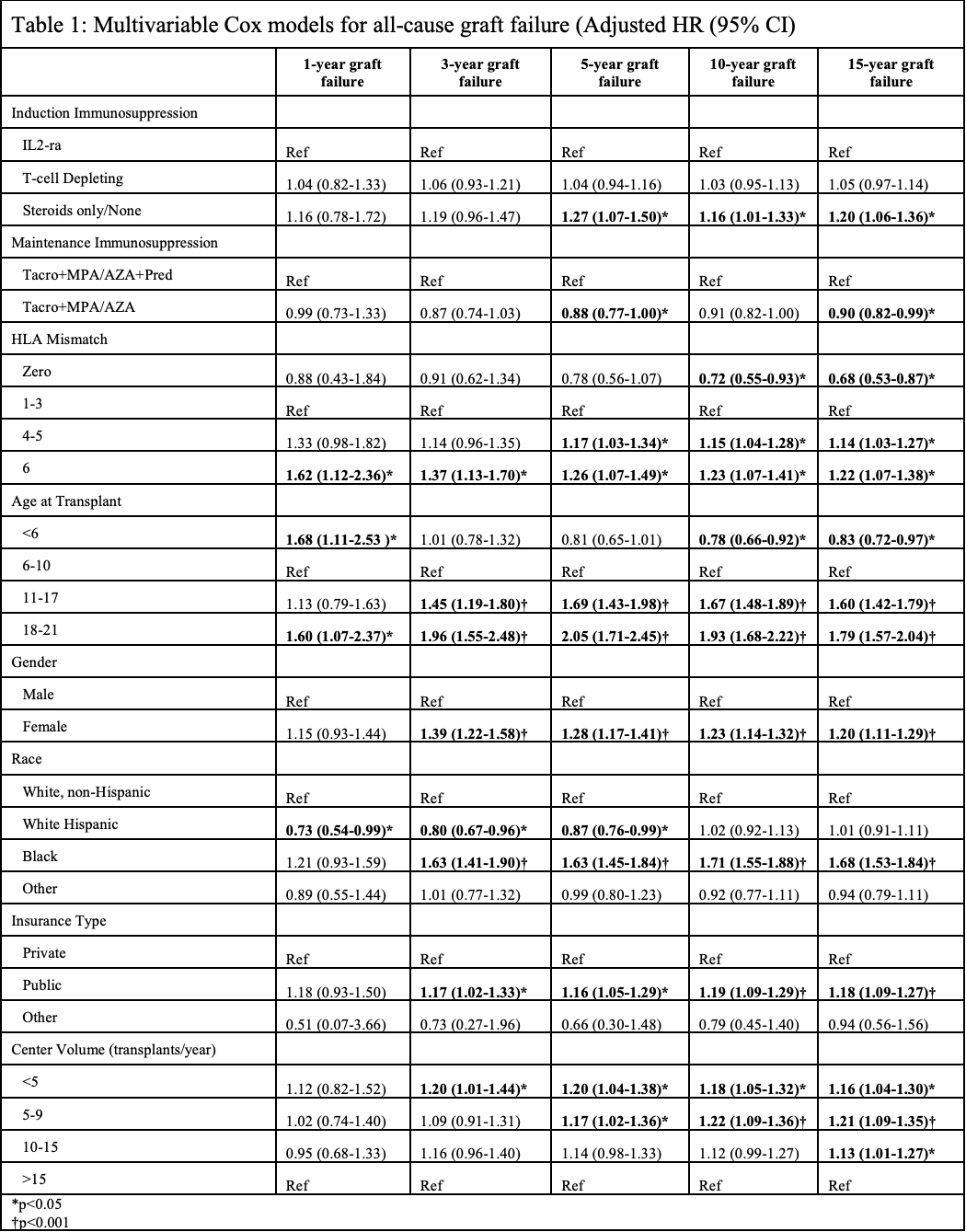Drivers of Graft Failure in Pediatric Kidney Transplant Change Over Time
1Children's Hospital of Philadelphia, Philadelphia, PA, 2Department of Biostatistics, Epidemiology, and Informatics, University of Pennsylvania, Philadelphia, PA
Meeting: 2021 American Transplant Congress
Abstract number: 78
Keywords: Kidney transplantation, Outcome, Pediatric
Topic: Clinical Science » Kidney » Kidney: Pediatrics
Session Information
Session Time: 6:00pm-7:00pm
 Presentation Time: 6:15pm-6:20pm
Presentation Time: 6:15pm-6:20pm
Location: Virtual
*Purpose: Short-term pediatric kidney transplant outcomes have improved over time with advanced surgical techniques and better immunosuppression, but long-term graft outcomes remain suboptimal – concerning for children who need multiple transplants over a lifetime. To target interventions, better understanding of contributors to positive and negative long-term outcomes are needed. We investigated whether induction choice was associated with graft outcomes over time. We also examined how donor and recipient characteristics impact short vs long-term outcomes.
*Methods: Using SRTR, we analyzed incident kidney transplant recipients in the U.S. < 21 years of age transplanted from 2002-2019. Choice of a single induction agent (IL2-ra, T-cell depleting, or steroids only) was our primary exposure with all-cause graft failure as the outcome at different time intervals (1, 3, 5, 10 and 15 years post-transplant). Multivariable cox proportional hazard models looked at adjusted hazard ratios of different drivers of graft failure at these intervals. Models were adjusted for age, gender, race, etiology of ESKD, insurance status, pre-emptive transplant, maintenance therapy, donor type, donor age, HLA mismatches, transplant center volume and transplant year.
*Results: T-cell depleting therapy (vs. IL2-ra) was not associated with graft failure at any post-transplant time interval. Initial maintenance therapy with Tacrolimus + anti-metabolite without steroids (vs. with steroids) did not show increased hazard of graft failure across time. Increased donor HLA mismatches were associated with worse long-term outcomes. Younger age (<6 yrs vs. 6-10 yrs) was associated with increased hazard of graft failure at 1 year, but protective for long-term graft survival >10 years post-transplant. Female gender, black race and public insurance were associated with increased hazard of graft failure at >3 years. Lower volume transplant centers (vs. high volume >15/yr) were associated with increased hazard of graft failure with longer follow up times, but not 1 year post-transplant.
*Conclusions: Drivers of graft failure in pediatric kidney transplant change with increased duration of graft survival. Associations with poor long-term outcomes were age, race, gender, insurance status, and facility related factors, but not therapy related factors. Further studies are warranted to inform policy and systems level changes that promote equity in long-term graft survival.
To cite this abstract in AMA style:
Benz E, Schaubel D, Amaral S. Drivers of Graft Failure in Pediatric Kidney Transplant Change Over Time [abstract]. Am J Transplant. 2021; 21 (suppl 3). https://atcmeetingabstracts.com/abstract/drivers-of-graft-failure-in-pediatric-kidney-transplant-change-over-time/. Accessed December 20, 2025.« Back to 2021 American Transplant Congress

